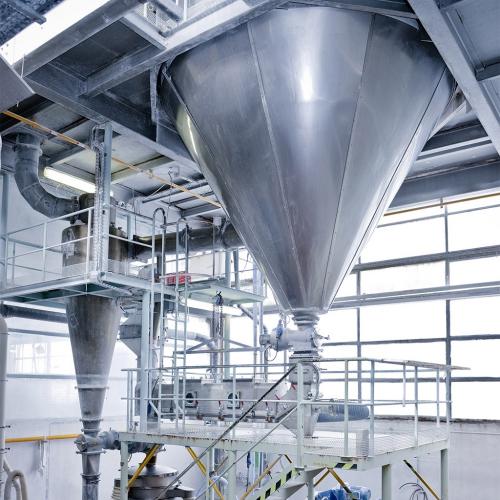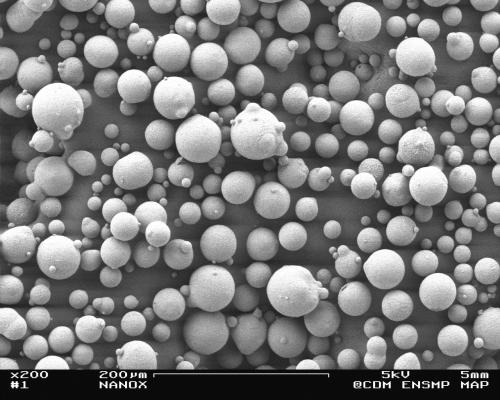Upstream of the pressing processes, powders should be prepared to be pressed, released from the moulds, and possibly machined before firing, all without breaking the parts. Accordingly, powders are produced in suspension (or slip) with the addition of organic binders and then spray dried.
General principle
The powders are suspended in water, then a small percentage of organic binders is added. The suspension is then sprayed with fine drops between 20 and 200µ, at the top of a tower through which a stream of hot air is passed. The drops are therefore dried in flight to give spherical granules that are slightly bonded. The powders are generally then sifted and conditioned.
Materials involved
Most pressing powders are produced in this way. In particular, the materials atomised by members of the Association are alumina, zirconia, alumina/zirconia composites and silicon carbide.
Advantages and disadvantages of this process
- Sphericity of the powder
- Low volatility
- Good density
- Good castability
- Good mechanical strength after pressing thanks to the binders (raw machining)
- Additional cost of the powder
- Possible pollution.

